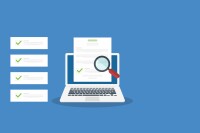Search
There are 53 results.
Category
Tag
Tag
All (53)
Analytics (4)
Assessments (7)
Asynchrony (3)
Belonging (2)
Canvas (6)
Case Studies (1)
Collaboration (3)
Communication (8)
Community (5)
Content Creation (1)
Course Maintenance (1)
Course Preparation (3)
Discussions (4)
Diversity (2)
Faculty Presence (9)
Faculty Support (3)
Feedback (5)
Formative Assessments (1)
Generative AI (1)
Grading (8)
Inclusion (4)
Learning Objectives (1)
Multimodality (4)
Peer Review (1)
Presentations (1)
Qualitative courses (1)
Quantitative courses (1)
Revision (1)
Rubrics (1)
Social Media (2)
Synchrony (5)
Third-Party Tools (1)
Video (1)
Workload (1)
Project-Based Learning
Project-based learning is learning that is organized around a project (Bell, 2010). It is a student-centered approach to learning, where students choose their topic of study and design an integrative project around the topic (Bell, 2010; Astawa et al., 2017). This form of study promotes self-efficacy in the learning environment. Such self-efficacy enables students to perform more difficult tasks and develop confidence in their abilities (Shin, 2018). These abilities generally help students to transfer their skills to the real world.
Oral Presentations Online
Interestingly, there is little research regarding best practices for incorporating oral presentations into online courses (McDougall & Holden, 2017). When developing online courses, instructors often avoid assigning presentations due to logistical concerns (Kenkel, 2011). However, the benefits of oral presentations as a form of assessment are significant enough to necessitate overcoming these fears.



